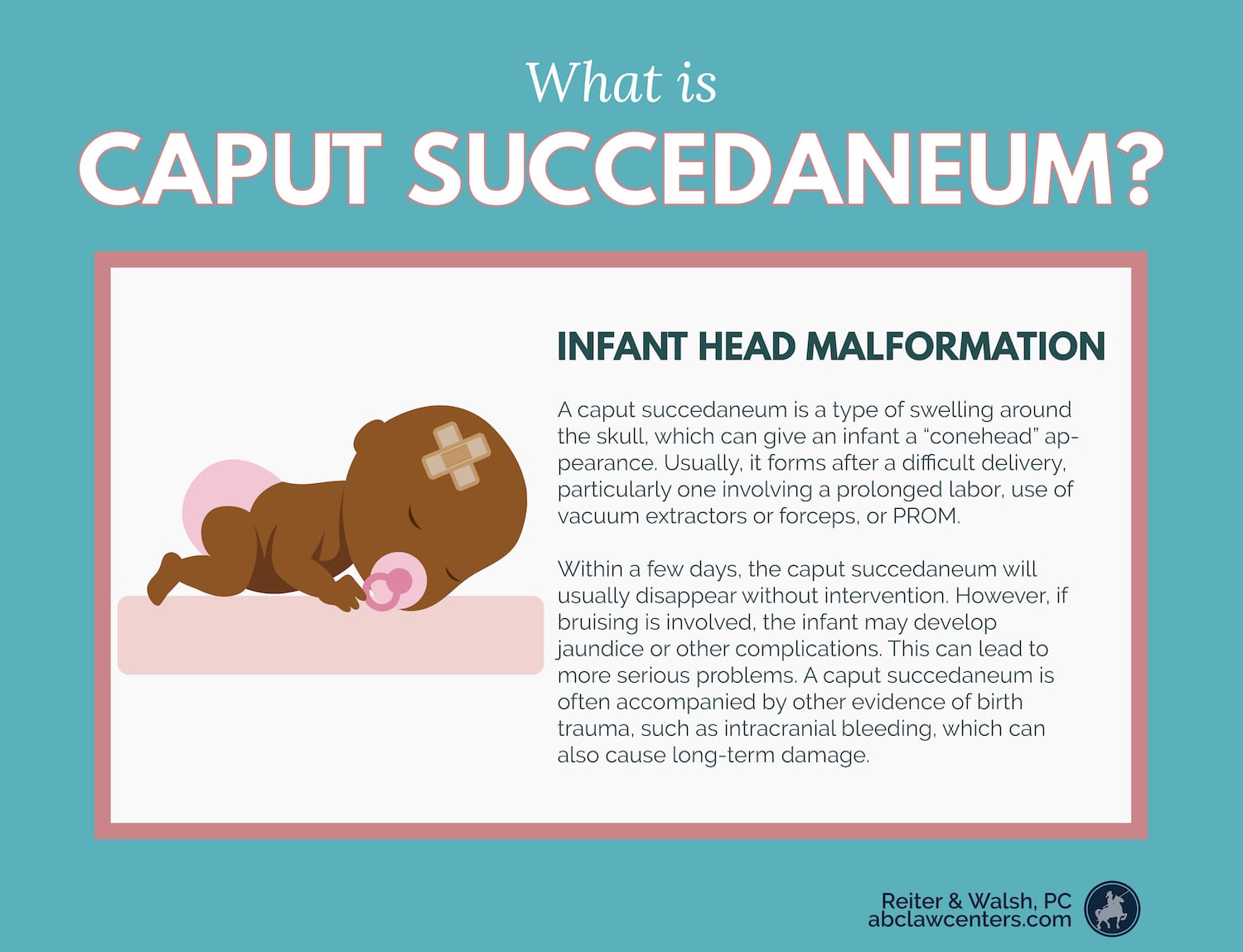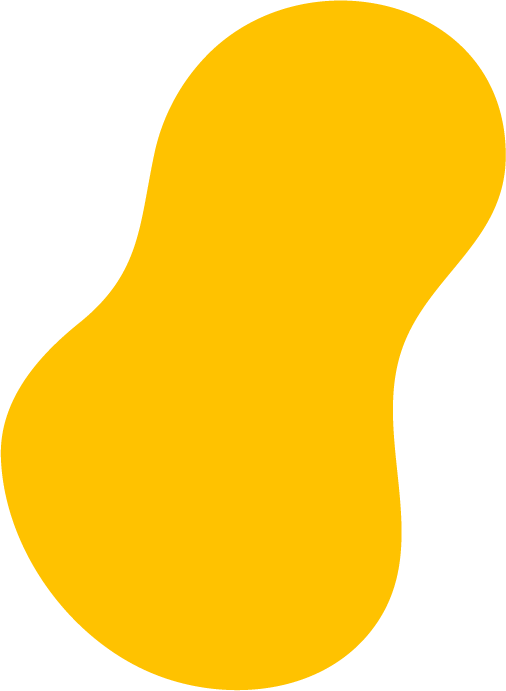Caput Succedaneum
Why is there a bump on my baby's head?
Every family wants to take home a happy, healthy baby. It can be really alarming to see a large bump on your newborn’s head. A bump on your baby’s head can be due to a type of swelling called caput succedaneum or a birth injury called a cephalohematoma. Often, these conditions are harmless and will diminish over time.
- Caput succedaneum is a temporary swelling after a difficult vaginal delivery. The baby’s head has a conehead appearance from the pressure in the birth canal. It usually disappears within a few days.
- Cephalohematoma is a type of birth injury involving swelling in the baby’s scalp. The swelling is from ruptured blood vessels and fluid buildup on the baby’s head. Cephalohematomas may occur in deliveries involving tools like vacuums and forceps.
A complicated-sounding diagnosis can be frightening as a new parent, especially if an injury has escalated to more severe consequences. If your family is dealing with the consequences of an untreated caput succedaneum or cephalohematoma, you are not alone. An experienced birth injury attorney can listen to your story and share your legal options if you believe medical negligence may have been the cause of your child’s suffering.
What is caput succedaneum?
A caput succedaneum is a type of swelling around a baby’s skull. Caput succedaneum is a temporary malformation due to a difficult labor. Pressure from the birth canal, heavy contractions, or vacuum delivery tools can cause the baby’s head to change shape. It should disappear within a few days.
Caput succedaneum usually includes:
- Conehead appearance of baby’s head
- Soft, puffy swelling on the scalp
- Swelling centered on part of the baby’s head that presented first during birth
- Bruising on the head
Caput succedaneum is usually harmless, but bruising may lead to other problems, such as:
- Jaundice: Swelling and bruising can lead to jaundice, which gives the skin a yellow tone. Jaundice can have serious consequences. If untreated, it can lead to a condition called kernicterus that can result in brain injury.
- Hair loss: The baby may have a “halo scalp ring” pattern of baldness (alopecia).
- Infection: Rarely, infections can occur if the caput succedaneum is infected.

Causes and risk factors of caput succedaneum
Caput succedaneum can be caused by a prolonged labor and delivery. Excessive pressure on the baby’s head can lead to swelling and bruising. A caput succedaneum is more likely to form in deliveries with the following complications/characteristics:
- Premature rupture of membranes (PROM)
- Oligohydramnios (insufficient amniotic fluid)
- Vacuum extractors or forceps use
- Braxton Hicks contractions
- First time mother (Primiparity)
- Spending too long in certain fetal positions
Signs and diagnosis
Caput succedaneum is usually most obvious immediately after delivery. Medical professionals should recognize it by these potential cues:
- A soft swelling of the scalp, primarily on the part of the head which came through the birth canal first
- Swelling may extend to both sides of the scalp
- Typically 1-2 cm in depth
- Bruising or changes to the color of the skin
Treatment and long-term outcomes
In most cases, no treatment is needed for a caput succedaneum; it will likely go away on its own.
Jaundice as a complication
However, bruising may lead to elevated bilirubin and jaundice. Jaundice is usually not a serious threat. Mild cases often resolve on their own.
If more intense degrees of jaundice go undiagnosed or are improperly managed, kernicterus can develop. Kernicterus is a dangerous and permanent form of brain damage. Babies with kernicterus may develop cerebral palsy, hearing impairments, and other lifelong disabilities.


Birth trauma attorneys helping children since 1997
Birth trauma is a difficult area of law to pursue due to the complex nature of the medical records. The award-winning attorneys at ABC Law Centers: Birth Injury Lawyers have decades of joint experience with birth trauma, hypoxic-ischemic encephalopathy (HIE), and cerebral palsy cases. To find out if you have a case, contact our firm to speak with one of our lawyers. We have numerous multi-million dollar verdicts and settlements that attest to our success, and no fees are ever paid to our firm until we win your case. We give personal attention to each child and family we help, and are available 24/7 to speak with you.
Featured Videos
Posterior Position
Hypoxic-Ischemic Encephalopathy (HIE)

Featured Testimonial
What Our
Clients Say…
After the traumatic birth of my son, I was left confused, afraid, and seeking answers. We needed someone we could trust and depend on. ABC Law Centers: Birth Injury Lawyers was just that.
- Michael


